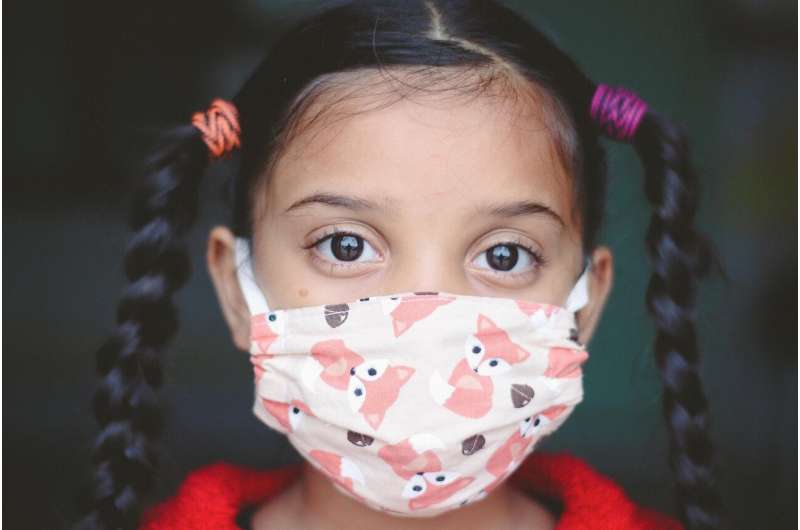
In the race to stop the spread of COVID-19, a three-layer cloth mask that fits well can effectively filter COVID particles, says a group of UBC researchers.
After testing several different mask styles and 41 types of fabrics, they found that a mask consisting of two layers of low-thread-count quilting cotton plus a three-ply dried baby wipe filter was as effective as a commercial non-surgical mask at stopping particles—and almost as breathable.
The cloth masks filtered out up to 80 percent of 3-micron particles, and more than 90 percent of 10-micron particles.
“We focused on particles larger than one micron because these are likely most important to COVID-19 transmission,” explains researcher Dr. Steven Rogak, a professor of mechanical engineering who studies aerosols. “While the COVID-19 virus is only around 0.1 micron in size, it is always attached to something larger, like the droplets produced by breathing, talking and coughing, which are typically in the micron and not submicron range.”
World Health Organization guidelines recommend three layers for a non-medical mask: an absorbent inner layer near the mouth, a middle filtration layer and an outer layer exposed to the external environment.
Mask materials
The team recommends specific fabrics for different parts of the mask: double-knit cotton, quilting cotton, knit nylon or polyester satin for the outer layer, and double-knit cotton, quilting cotton or simple-weave silk for the inner layer that sits closest to the skin.
Nylon and polyester repel water, keeping harmful droplets from penetrating through to the inner layers. Cotton and silk feel comfortable, breathe well, and wick away moisture. Importantly, fabric construction is important to breathability and filtration efficiency. For example, fabrics such as polyester crepe (finely woven polyester), high thread-count cotton and dupion silk are not very breathable.
Dried baby wipes, which can be swapped out, make surprisingly good filters.
“Baby wipes are typically made of spunlace and spunbond polypropylene—similar to the types of polypropylene found in medical masks and N95 respirators,” said researcher Dr. Jane Wang, a clinical professor in the faculty of medicine.
“They are breathable and trap particles efficiently. They’re biocompatible, containing minimal preservatives and chemicals that may otherwise cause irritation or breathing problems.”
Fit is paramount
Aside from choosing efficient, breathable materials, it’s important to have a good seal around the mask, say the researchers.
“Even an N95 mask is going to take in large, massive droplets with lots of viruses if it does not seal against the face. A well-fitted, well-designed cloth mask with a baby-wipe filter will be more effective at filtering 5- or 10-micron particles than a poorly fitted N95 mask,” said Dr. Rogak.
He added that the highest leak rates are around the nose, chin and the cheeks, and pleated-style masks tend to leak the most.
“The mask should not sit flat against your mouth and nose, because it will be less breathable, as there’s only one very tiny portion of the fabric actually exchanging air. Even if it’s made of breathable material, it won’t feel that way. You need to create a bit of an air pocket, with a bigger curvature in front, so that the whole mask is engaged in air exchange.”
In the end, masking is an intervention aimed at risk reduction, not risk elimination, says Dr. Wang.
Source: Read Full Article
